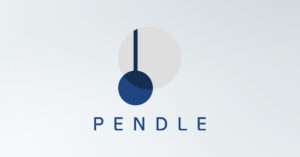Latest News
- BlackRock Effect: 4 Obscure Altcoins Wall Street Might Pump Next, Buy Before April Ends
- Crypto Price Analysis 4-10: BITCOIN: BTC, ETHEREUM: ETH, SOLANA: SOL, CELESTIA: TIA, DOGWIFHAT: WIF, JUPITER: JUP, PENDLE: PENDLE
- Pendle Price Prediction 2025, 2026 – 2030: Is PENDLE Coin Worth A Buy?
- Crypto market’s weekly winners and losers – EOS, PENDLE, BERA, JUP
Current Price
The current price of PENDLE is $3.04899
Introduction
Pendle ($PENDLE) represents a significant advancement in the decentralized finance (DeFi) sector by introducing an innovative approach to yield generation through its unique tokenization model.
This protocol not only separates ownership from yield but also enhances liquidity through its dual-token system, allowing for a range of trading strategies.
As we explore Pendle’s operational mechanisms and its comparative standing within the DeFi ecosystem, it becomes essential to contemplate both its potential advantages and inherent risks. What implications might this have for investors and the broader market?

Quick Overview
- Pendle is a DeFi protocol that tokenizes future yield, enhancing liquidity and maximizing investment opportunities.
- It operates using two token types: Ownership Tokens (PT) for principal assets and Yield-Bearing Tokens (YT) for generated yield.
- Pendle supports diverse trading strategies, including speculation and hedging, through its unique yield tokenization mechanism.
- The protocol features community governance, allowing stakeholders to participate in decision-making and align incentives.
- Risks include market volatility and smart contract vulnerabilities, necessitating careful risk evaluation for potential investors.
What Is Pendle?
Pendle is a decentralized finance (DeFi) protocol that enables users to tokenize and trade their future yield on various underlying assets. By facilitating the separation of ownership from yield generation, Pendle allows users to access liquidity from their yield-generating assets without needing to liquidate them. This innovative approach creates a marketplace for yield that enhances capital efficiency and investment strategies.
The protocol operates by enabling users to lock their assets in a smart contract, subsequently issuing two distinct tokens: the ownership token (PT) and the yield-bearing token (YT). The ownership token reflects the right to the underlying asset, while the yield-bearing token represents the future yield generated by that asset. This bifurcation allows for diverse trading strategies, such as speculation on yield rates or hedging against future yield fluctuations.
Pendle’s unique model also has implications for yield farming and liquidity provision, as it can attract a broader range of participants in the DeFi ecosystem. In this manner, Pendle not only promotes liquidity but also enhances the overall functionality and attractiveness of yield-generating assets in the rapidly evolving DeFi landscape.
How Pendle Works
The operational framework of Pendle centers around its innovative tokenization mechanism, which allows users to access the value of their yield-generating assets. By separating the ownership of the underlying asset from its associated yield, Pendle enables users to tokenize their yield-bearing cryptocurrencies into two distinct tokens: the principal token (PT) and the yield token (YT).
This separation grants users the flexibility to sell or trade their yield tokens while still retaining ownership of the principal asset. When a user deposits a yield-generating asset into Pendle, they receive an equivalent amount of PT and YT. The PT represents the original asset, while the YT embodies the future yield that the asset will produce over a set period.
This mechanism not only enhances liquidity in the DeFi ecosystem but also allows users to optimize their investment strategies, such as leveraging yields or reinvesting in other opportunities.
Additionally, Pendle employs a decentralized governance structure, enabling token holders to participate in decision-making processes regarding protocol upgrades and changes. This governance model reinforces community engagement and supports the platform’s long-term sustainability in a rapidly evolving market.
Key Features of Pendle
Pendle’s key features include a yield tokenization mechanism that allows users to separate the ownership of yield-generating assets from their underlying tokens.
This innovative approach enhances liquidity and provides new opportunities for users to maximize returns.
Additionally, Pendle’s integration with decentralized finance (DeFi) platforms further expands its utility and accessibility within the crypto ecosystem.

Yield Tokenization Mechanism
In the evolving landscape of decentralized finance, a notable innovation is the yield tokenization mechanism that underpins Pendle. This mechanism allows users to separate ownership of an asset from its yield, creating two distinct tokens: the underlying asset token (yToken) and the yield-bearing token (pToken). The yToken represents the original asset, while the pToken encapsulates the future yield generated by that asset.
This separation serves multiple purposes. To begin with, it enhances liquidity, as users can trade pTokens while retaining ownership of their yTokens.
In addition, it allows for greater flexibility in yield strategies, enabling users to optimize their returns through various financial instruments available on the platform.
Additionally, the yield tokenization mechanism facilitates a more efficient capital allocation, allowing investors to take advantage of different yield opportunities across the decentralized finance ecosystem.
Decentralized Finance Integration
Yield tokenization is just one facet of Pendle’s broader integration within the decentralized finance ecosystem. This innovative platform allows users to separate ownership and yield generation, facilitating a new paradigm for asset utilization. By enabling the minting of yield-bearing tokens, Pendle empowers users to access liquidity on their staked assets, thereby enhancing capital efficiency.
Pendle’s architecture supports various DeFi protocols, allowing for seamless interaction with existing liquidity pools and lending platforms. The integration with protocols such as Uniswap and Aave underscores Pendle’s commitment to interoperability, providing users with diverse options for yield generation and risk management.
Moreover, Pendle’s governance model, which is community-driven, guarantees that users have a say in the platform’s evolution, aligning incentives across stakeholders. The platform’s emphasis on security, coupled with its transparent smart contracts, builds trust among users.
Additionally, Pendle’s dynamic fee structure is designed to incentivize liquidity provision, making it an attractive option for both yield farmers and liquidity providers. Overall, Pendle’s multifaceted approach to DeFi integration positions it as a pivotal player in the evolving landscape of decentralized finance, illustrating the potential of yield tokenization beyond mere asset trading.
Benefits of Using Pendle
Utilizing Pendle offers several advantages that can greatly enhance the management and optimization of digital assets. One of the primary benefits is the ability to tokenize yield-bearing assets, allowing users to separate ownership from the future yield. This innovative approach enables liquidity for assets that would otherwise remain stagnant, thereby increasing the overall efficiency of capital utilization.
Furthermore, Pendle facilitates the trading of future yield, which introduces new opportunities for speculation and investment. Users can effectively hedge against market fluctuations by locking in yields, thereby providing a layer of risk management that is often absent in traditional finance.
Additionally, Pendle’s decentralized nature guarantees enhanced security and transparency, as users retain control over their assets rather than relying on centralized intermediaries. This aligns with the broader ethos of DeFi, promoting autonomy and trustless interactions.
Moreover, Pendle’s protocol is designed with scalability in mind, allowing for seamless integration with various decentralized finance platforms. This interoperability enhances the user experience and opens up additional avenues for asset management.

Comparison With Other Defi Protocols
In comparing Pendle to other DeFi protocols, it is essential to examine its unique yield strategies, which set it apart from traditional approaches to yield generation.
Additionally, the liquidity mining incentives offered by Pendle may provide distinct advantages that influence user engagement and capital allocation.
This analysis will highlight how these features contribute to Pendle’s competitive positioning within the DeFi landscape.
Unique Yield Strategies
Many decentralized finance (DeFi) protocols employ distinct yield strategies to attract liquidity, yet Pendle stands out with its innovative approach. Unlike traditional yield farming, Pendle introduces a unique mechanism that allows users to tokenize and trade their future yield. This not only enhances liquidity but also offers flexibility and the potential for amplified returns.
Key features of Pendle’s yield strategies include:
- Yield Tokenization: Users can separate their yield from the underlying asset, enabling them to sell or leverage their future income without liquidating the asset itself.
- Secondary Market for Yield: Pendle creates a secondary market where yield tokens can be traded, allowing investors to speculate on or hedge against future yield performance.
- Flexible Investment Options: By allowing users to choose between immediate yield or deferred yield through tokenized assets, Pendle caters to various risk appetites and investment strategies.
These innovative yield strategies not only differentiate Pendle from other DeFi protocols but also provide users with diverse options for managing their investments, thereby enhancing the overall DeFi ecosystem.
Liquidity Mining Incentives
Pendle’s unique approach to yield strategies naturally extends into its liquidity mining incentives, which further differentiates it from other decentralized finance (DeFi) protocols. Unlike conventional liquidity mining programs that often rely on simple token rewards, Pendle implements a dual-token model that incentivizes liquidity providers to lock in their assets for extended periods. This mechanism not only stabilizes liquidity within the ecosystem but also enhances the overall yield generation for participants.
In comparison to other DeFi platforms, Pendle’s liquidity mining incentives are intricately tied to its yield tokenization strategy. While many protocols offer rewards in their native tokens, Pendle’s approach allows users to earn yield on locked assets while simultaneously participating in liquidity mining. This creates a compelling use case for users looking to maximize their returns.
Furthermore, Pendle’s incentives are structured to adapt to market conditions, utilizing dynamic reward adjustments that guarantee sustainable tokenomics. In contrast, many DeFi protocols struggle with inflationary pressures due to fixed reward systems.
Risks and Considerations
Investors engaging with Pendle must navigate a landscape fraught with various risks and considerations that could greatly impact their financial outcomes.
While Pendle offers innovative opportunities for yield generation, several factors merit careful evaluation.
- Market Volatility: The cryptocurrency market is notoriously volatile. Price fluctuations can considerably affect the value of PENDLE tokens and the underlying assets, posing risks to investors’ capital.
- Smart Contract Risks: As Pendle relies on smart contracts for its operations, vulnerabilities in the code could lead to unintended consequences, including loss of funds.
Investors should be aware of the potential for exploits or bugs within the protocol.
- Liquidity Risks: While Pendle may offer enticing yields, the liquidity of its tokens can vary.
In times of market stress, the ability to quickly convert tokens into cash may be hindered, impacting an investor’s ability to access funds when needed.
Future of Pendle and DeFi
As the landscape of decentralized finance (DeFi) continues to evolve, Pendle’s innovative approach to tokenized yield generation positions it as a remarkable player in the sector. By enabling users to separate the ownership of yield-bearing assets from the actual yields, Pendle facilitates a more dynamic trading environment where liquidity can be maximized.
This model not only enhances capital efficiency but also allows for creative financial strategies, appealing to a diverse range of investors.
Looking ahead, Pendle’s integration with various DeFi protocols could greatly expand its user base and utility. As partnerships with other blockchain projects and lending platforms develop, Pendle may enhance its market presence and operational scope.
Furthermore, the anticipated refinement of its governance model, which involves community-driven decisions, may bolster user trust and engagement.
However, the future of Pendle will largely depend on its ability to navigate regulatory scrutiny and market volatility. As DeFi faces increasing attention from regulators, Pendle must guarantee compliance while maintaining its innovative edge.
Ultimately, the project’s sustained growth will hinge on its adaptability to the rapidly changing DeFi environment and its commitment to fostering user-centric solutions.
Frequently Asked Questions
What Is the Origin of the Pendle Project and Its Team?
The Pendle project originated from a vision to enhance decentralized finance by enabling yield tokenization. Its team comprises experienced professionals from blockchain technology and finance, aiming to innovate and expand the DeFi landscape through collaborative efforts.
How Can I Buy or Trade Pendle Tokens?
To acquire or trade Pendle tokens, utilize reputable cryptocurrency exchanges that list the token. Confirm proper account verification, fund your account, and execute buy or sell orders while adhering to applicable regulations and security practices.
Are There Any Community Initiatives or Events for Pendle Users?
Community initiatives and events for users typically include online forums, social media engagements, webinars, and collaborative projects aimed at enhancing user experience and promoting education within the ecosystem, fostering interaction and networking among participants.
What Wallets Support Pendle for Transactions and Storage?
Several wallets support Pendle for transactions and storage, including MetaMask, Trust Wallet, and Ledger. These wallets facilitate secure management of Pendle tokens while ensuring compatibility with decentralized exchanges and other DeFi platforms.
Where Can I Find Pendle’s Latest Updates and News?
To find the latest updates and news about Pendle, consider following their official website, social media channels, and cryptocurrency news platforms. Engaging with community forums may also provide timely insights and discussions regarding recent developments.
Wrapping Up
Pendle represents a significant advancement in the decentralized finance ecosystem by innovatively tokenizing future yield and enhancing liquidity through its dual-token system.
The protocol’s capacity for diverse trading strategies and risk management, coupled with its community governance model, positions it as a vital player in the DeFi landscape.
As the DeFi space continues to evolve, Pendle’s unique offerings may contribute to broader capital efficiency and user engagement, warranting further exploration and analysis of its long-term implications.
